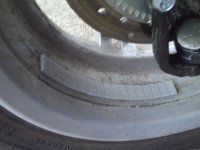It takes old-fashioned investigation by an experienced and dedicated technician (or owner). Check the wheels to see if they run true, both axially and laterally, both inside and outside rims of each wheel. Untrue wheels must be replaced. Check the wheel bearings, and replace any with problems. Check the tires to see if the tread runs true. Best checked on a spin truing machine, but it can be done on the vehicle or on a wheel truing stand or balancing machine. Tire treads can be trued sometimes by shaving the tire, but the tires may need to be replaced if a tire defect is at fault or the tread is thin. Spin balance the tires and check to see they haven't changed. If any have excessive weight to balance them, they should probably be replaced. If the tires have Ride-On or another balancing/sealing material in them, that could be the problem. Improper quantities of the material, or tire defects or irregularities, can cause them to create rather than fix an imbalance. Cold tires or tires that have rested a long time will often be imbalanced by the liquid until you do a few highway miles. This causes a "wobble" if the imbalance points hit the ground at different times, and even can cause a wheel hop effect. In some cases removing the substance will improve things, and in some the tires have to be replaced. Note that wheel alignment issues can enhance imbalance or runout problems, and increase the perception of "wobble". Checking alignment is a good idea in stubborn cases. You may have multiple factors involved, which will make finding the cause very difficult. In those cases it is best to swap wheels and tires with a known good vehicle. If the problem is then gone, both the wheels and tires may have to be replaced.

